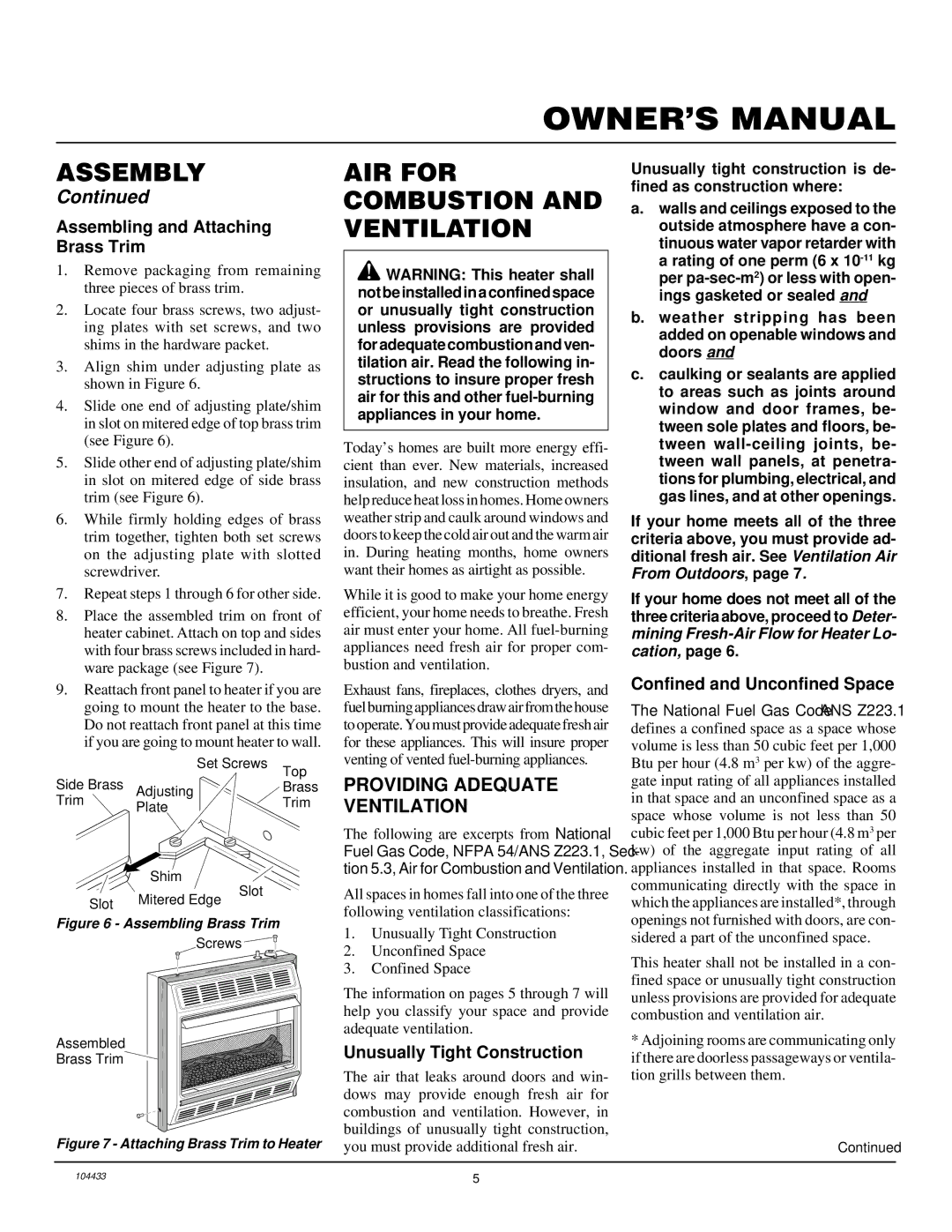RFN30T specifications
The Desa RFN30T is a state-of-the-art heating appliance designed to meet the demands of modern living while ensuring energy efficiency and user convenience. This product showcases the latest advancements in heating technology, making it a popular choice among homeowners seeking reliable warmth during the colder months.One of the standout features of the Desa RFN30T is its powerful heating capacity. It is equipped with a robust heating element that delivers rapid warmth, effectively heating spaces up to 1,000 square feet. This makes it ideal for both residential and commercial applications, ensuring comfort in larger areas without compromising on performance.
Energy efficiency is a critical aspect of the Desa RFN30T. The appliance utilizes advanced thermal regulation technology that allows for precise temperature control. This feature helps in reducing energy consumption, making it both an eco-friendly choice and a cost-effective solution for home heating. The intelligent thermostat automatically adjusts the heating output based on the room temperature, which further enhances energy savings.
The design of the Desa RFN30T combines functionality with aesthetic appeal. Its sleek and modern look allows it to blend seamlessly into various interior styles. The unit is also lightweight and portable, allowing users to move it from room to room effortlessly. Its compact size does not compromise its heating capabilities, making it suitable for small spaces like apartments, offices, or even workshops.
Safety is a top priority with the Desa RFN30T. The appliance comes equipped with several safety features, including an automatic shutoff mechanism that activates in case of overheating or accidental tipping. This ensures that users can operate the heater with peace of mind, knowing that it meets rigorous safety standards.
Moreover, the Desa RFN30T is designed for ease of use. It features a user-friendly control panel with intuitive settings, making it accessible for individuals of all ages. With its simple installation process, users can quickly set up the heater and enjoy warmth within minutes.
In summary, the Desa RFN30T is a reliable and efficient heating solution that excels in performance, safety, and user convenience. With its powerful heating capacity, energy-saving technologies, stylish design, and safety features, the RFN30T stands out as an excellent choice for anyone in need of effective heating solutions.

